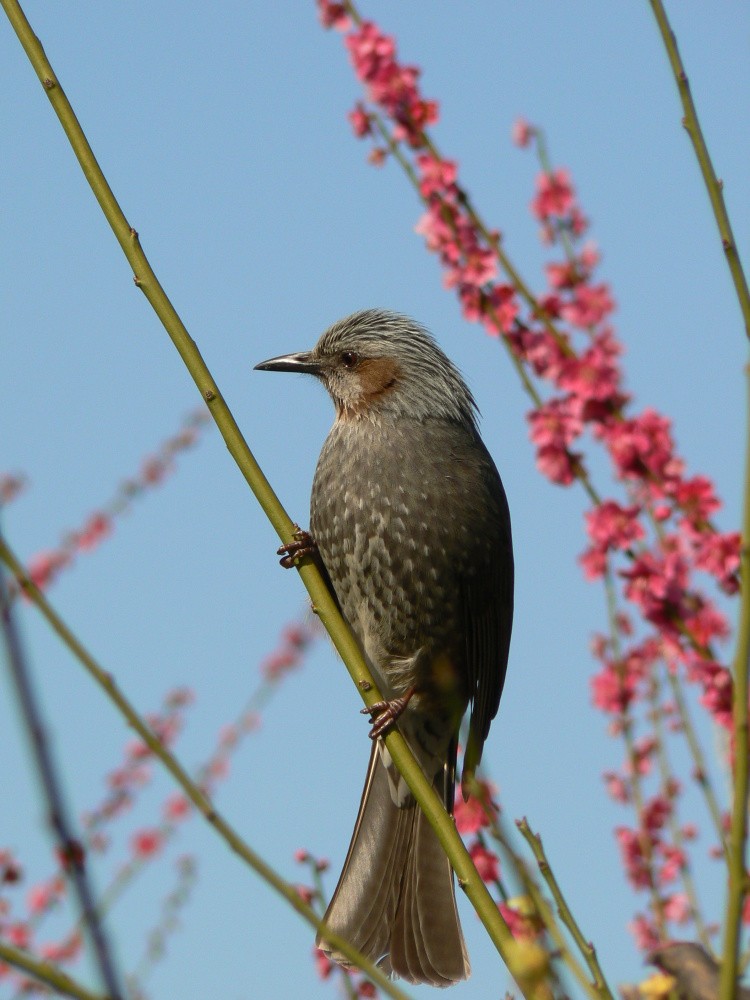Brown-eared Bulbul
A species of Indian Ocean Bulbuls and Allies Scientific name : Hypsipetes amaurotis Genus : Indian Ocean Bulbuls and Allies
Brown-eared Bulbul, A species of Indian Ocean Bulbuls and Allies
Botanical name: Hypsipetes amaurotis
Genus: Indian Ocean Bulbuls and Allies
Content
Description People often ask General Info
 Photo By Kuribo , used under CC-BY-SA-3.0 /Cropped and compressed from original
Photo By Kuribo , used under CC-BY-SA-3.0 /Cropped and compressed from original Description
The brown-eared Bulbul’s loud cry isn’t the only trait that makes it easy to recognize in rural and suburban habitats. Along with its loud, shrill calls, the songbird has an undulating flight pattern, that makes it easy to distinguish from other species. The bird feeds primarily on insects but will also drink Camellia flower nectar, aiding in pollination. 
Size
28 cm
Nest Placement
Tree
Feeding Habits
Brown-eared Bulbul has a varied diet including insects in summer and fruits and seeds in colder months. They feed on nectar, facilitating Camellia pollination, a unique behavior during low insect activity seasons.
Habitat
Brown-eared Bulbul predominantly inhabits a variety of forested environments including deciduous, mixed, and evergreen forests situated in lowlands and foothills up to 1600 meters, occasionally reaching 2100 meters during the breeding season. In winter, brown-eared Bulbul adapts to open agricultural landscapes, groves, and hedgerows. Brown-eared Bulbul has also become a familiar visitor to suburban and urban regions, flourishing in parks and gardens. The broader geographical distribution extends across extensive regions of East Asia, reflecting brown-eared Bulbul's adaptability to a wide range of habitats.
Dite type
Frugivorous
General Info
Feeding Habits
Bird food type

Fruit
Distribution Area
The brown-eared bulbul is common in a very large range that includes the Russian Far East (including Sakhalin), northeastern China, the Korean Peninsula, and Japan, south to Taiwan and the Babuyan and Batanes island chains in the north of the Philippines. Historically, brown-eared bulbuls were migratory birds moving to the southern parts of its range in winter, but they have taken advantage of changes in crops and farming practices in recent decades to overwinter in areas farther north than previously possible. Most brown-eared bulbuls still move south in winter, often forming huge flocks during migration. They are considered agricultural pests in some areas of Japan where they may invade orchards and damage crops such as cabbages, cauliflowers and spinach. 
Species Status
Not globally threatened.